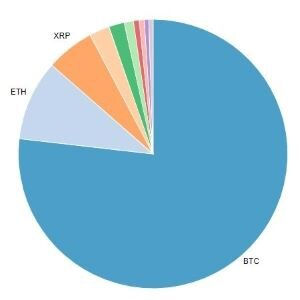How to Build Your Own Crypto Index Portfolio
- Bitcoinsguide.org

- Jun 2
- 2 min read
Index investing removes emotion and focuses on diversified, systematic exposure to the market. Here’s how to create a custom crypto index portfolio that you can hold for the long term.
1. Why a Crypto Index Portfolio?
Diversification: Spreads risk across multiple assets rather than “all-in” on one coin.
Simplicity: No need to constantly pick individual winners or time the market.
Reduced Bias: Automates buying by formula, avoiding FOMO and panic selling.
Long-Term Growth: Captures the overall market upside over time.

Build your own Crypto Index Portfolio
2. Define Your Investment Universe
Choose a set of assets that represent the segments you believe will grow:
Large caps: Bitcoin (BTC), Ethereum (ETH)
Smart-contract platforms: Solana (SOL), Avalanche (AVAX), Cardano (ADA)
DeFi leaders: Uniswap (UNI), Aave (AAVE), Chainlink (LINK)
Infrastructure & tools: Polygon (MATIC), The Graph (GRT), Filecoin (FIL)
Optional niches: Privacy (Monero, Zcash), Interoperability (Polkadot, Cosmos), Gaming (AXS, SAND)
3. Choose Your Weighting Method
Market-cap weighting
Aligns with on-chain value; top assets (BTC, ETH) dominate.
Pros: Auto-adjusts with market. Cons: Overweights largest assets.
Equal weighting
Gives each asset the same portfolio percentage (e.g., 10 assets × 10% each).
Pros: More DeFi/niche exposure. Cons: Requires more rebalancing.
Custom tilt
Over- or under-weight sectors you believe in (e.g., 50% smart-contract platforms, 30% DeFi, 20% infrastructure).
Pros: Tailored to your thesis. Cons: Introduces personal bias.
4. Establish Rebalancing Rules
Periodic rebalancing: Quarterly or semi-annual to maintain target weights.
Threshold rebalancing: Rebalance when any asset drifts by ±5–10% from its target.
Hybrid approach: Combine time and threshold to optimize trading costs.
5. Implement Tracking & Execution
Portfolio tools: Use Zapper, CoinStats, or CoinTracker to monitor holdings and performance.
Automated execution: DCA into your portfolio on a schedule (e.g., monthly) via exchanges or DeFi aggregators.
Manual trades: Set limit orders when rebalancing to control slippage and fees.
6. Manage Fees & Tax Considerations
Minimize fees: Favor exchanges or platforms with low trading fees and optimize on-chain gas by batching transactions.
Tax events: Each rebalance may trigger taxable events. Keep detailed records or use tools like CoinTracker or Koinly for reporting.

Build your Crypto Index Fund
7. Monitor & Adjust Your Thesis
Quarterly review: Assess protocol fundamentals, developer activity, and on-chain metrics.
Add/remove assets: Evolve your index by inducting emerging leaders or deprecating underperformers.
Stay informed: Follow project updates, roadmaps, and regulatory changes that may affect asset inclusion.
Conclusion
A well-constructed crypto index portfolio provides diversified, systematic exposure to the market’s growth.
By defining your universe, choosing a weighting method, establishing clear rebalancing rules, and managing costs and taxes, you can build a resilient strategy that removes emotion and focuses on the long term.
Ready to streamline your crypto investing with proven index strategies?
Sign up at bitcoinsguide.org for exclusive tools, templates, and detailed tutorials to automate your crypto index portfolio today.



Comments